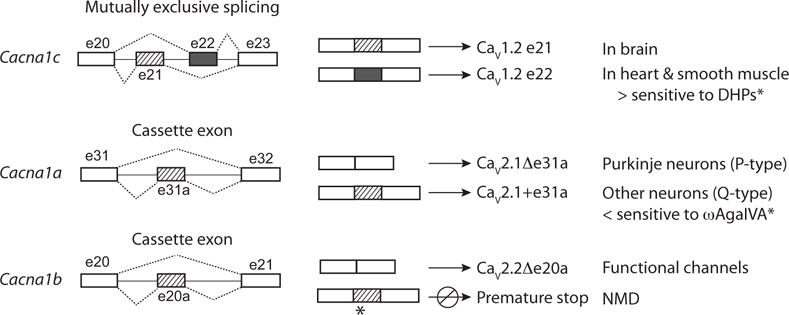Fig. (1).

Examples of alternative pre-mRNA splicing that have been observed for Cacna1 genes. Alternative splicing can involve the selection of one of a pair of mutually exclusive exons that are the same (or similar) lengths but that encode slightly different amino acid sequences. A pair of mutually exclusive exons, e21 and e22, are present in Cacna1c. E21 is selected more frequently during pre-mRNA splicing in brain, whereas in heart and smooth muscle, e22 is selected more often (see Table 1) [85]. E21 and e22 influence the sensitivity of CaV1.2 currents to DHPs [9, 77, 78, 85]. The inclusion of one mutually exclusive exon is often required to maintain the correct reading frame, and if neither or both are included during splicing a premature stop codon is often introduced resulting in NMD. Cassette exons are included or excluded during alternative pre-mRNA splicing. E31a of Cacna1a is excluded during pre-mRNA splicing in Purkinje neurons of the cerebellum (P-type currents), whereas in other neurons including cerebellar granule cells, e31a is included (Q-type currents). The presence of e31a influences inhibition by ω-agatoxin IVA [61]. The cassette e20a in Cacna1b is repressed in most neurons but if included it introduces a premature stop codon (see GenBank FJ609386.1). Certain cells may use e20a to down regulate CaV2.2 protein expression levels.
